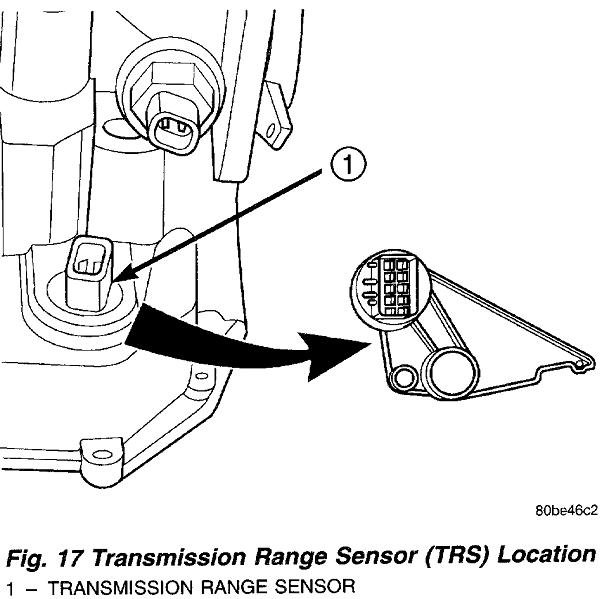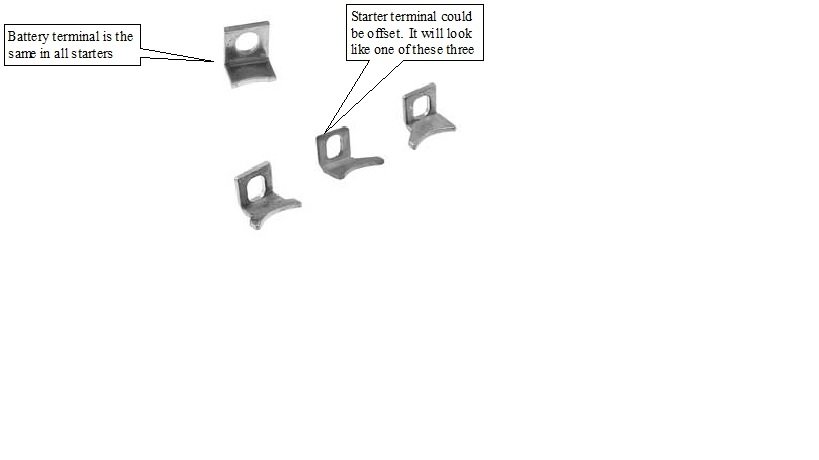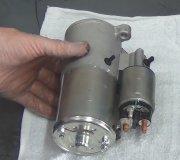It is at the driver's side front of the transmission, but I do not think that is causing the problem. What you described fits perfectly with a very common problem that causes an intermittent no-crank. Release the ignition switch, then turn it to "crank" again, and the starter works just fine. A week later this happens two times before it cranks. The problem gets progressively worse if you let it go long enough. In the case of ignoring this on my mother's Grand Caravan for months, it eventually started after losing count after turning the ignition switch over 700 times, and a huge blister on her thumb! You can be sure I heard about it that night.
The common cause is worn contacts in the starter solenoid. Most people just replace the entire starter, but there are repair kits available from auto parts stores and farm and home stores. In my experience, there are two kits available, and either one will work for your vehicle. They both come with four copper contacts and a plunger with a copper contact disc. The difference in the two kits is just that the shaft on the plunger is 1/8" longer than in the other kit, but I have never found it necessary to replace that part. It is just the contacts that burn away. You only use the two in the kit that match the old ones.
You get four contacts in the kit. One is the "battery" contact and it is the same for all Chrysler's and Toyota's that use this little silver Nippendenso starter. You get three versions of the "starter" contact, but you just use the one that matches the one you took out. There is no way to know which of the three starter contacts you have until you take it apart and look. All of these starters on Chrysler engines interchange over all the years and engine sizes, so when you buy a rebuilt starter, you are surely getting one from a different year and model. That is why you cannot always go by your year and model to get the right contacts.
You can also visit a starter/generator re-builder and buy just the two contacts you need for about three dollars each, but again, you have to know which one you need for the starter contact. Every larger city has at least one of these shops. If you do not know where your nearest one is, ask at any heavy truck repair shop or farm implement dealer. They are sending starters and generators there all the time.
These kits work in these Nippendenso starters on Toyota's too, but if you need the plunger, they use one with much longer shaft. Those have to come right from the Toyota dealer's parts department.
As a mechanic, this might be too basic for your needs, but consider looking at this article for more information:
https://www.2carpros.com/articles/how-a-starter-and-solenoid-works
If solenoid contacts do not seem to be the right suspect, we will need to look into this further. You do not actually have a neutral safety switch like we had in the past. You have a transmission range sensor, then a computer determines when the transmission is in "park". Typically if there is a problem with that sensor, the computer lets you know by illuminating all the lights in the dash "PRNDL" instead of just the one for the gear you are in. The diagnosis also includes using a scanner to see what the Transmission Computer is seeing. If no obvious defect is indicated, listen for the single rather loud clunk of the starter solenoid when you turn the ignition switch to "crank". If you hear that when the starter does not spin the engine, you can verify the contacts are worn by having a helper hold the ignition switch in "crank" while you take two voltage readings. A test light actually works better for this. Look at the terminal on the starter where the battery cable connects and you will see the test light is bright. Now move the test light to the other side of the solenoid. You will have to lift up a rubber cover to see that terminal with a braided cable going into the starter motor. Test that one and you will see there is 0 volts, or close to it there. The worn contacts are preventing battery voltage from getting to that terminal.
Images (Click to make bigger)
SPONSORED LINKS
Sunday, September 2nd, 2018 AT 9:09 PM





